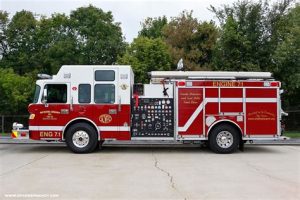Table of Contents
Discover the various billing rates for volunteer fire departments. Understand how these rates are determined and the factors that influence them. Learn about the importance of proper billing practices to ensure the sustainability of volunteer fire departments and their ability to provide essential services to communities.
Volunteer Fire Departments play a crucial role in our communities, providing immediate emergency response services without hesitation. However, as much as we appreciate their courage and dedication, the financial aspect of running these departments often goes unnoticed. Many people are unaware that Volunteer Fire Departments rely on billing rates to sustain their operations, ensuring they can continue saving lives and protecting properties. So, how exactly do these billing rates work? Let’s delve into the world of Volunteer Fire Department financing and shed light on this vital but lesser-known aspect of their invaluable service.
Introduction
Volunteer fire departments play a crucial role in safeguarding communities across the country. These dedicated individuals selflessly offer their time and expertise to protect lives and property during emergencies. While their services are invaluable, it is important to understand that volunteer fire departments often face financial challenges. One such challenge is determining appropriate billing rates for their services. In this article, we will delve into the intricacies of volunteer fire department billing rates and shed light on the factors that influence these rates.
The Need for Billing Rates
While volunteer firefighters provide their services free of charge, there are instances when they must bill for their services. Such situations may arise when responding to motor vehicle accidents, hazardous material spills, or other incidents that require specialized equipment and resources. Billing rates allow volunteer fire departments to recover some of the costs associated with responding to these incidents.
Finding the Right Balance
Setting billing rates for volunteer fire departments is a delicate balancing act. On one hand, these rates need to be reasonable enough to cover expenses and ensure the sustainability of the department. On the other hand, they should not burden the community members who rely on these services. Striking the right balance is crucial to maintain financial stability while preserving the spirit of volunteerism.
Factors Influencing Billing Rates
Various factors come into play when determining billing rates for volunteer fire departments. Some of these factors include:
1. Equipment and Maintenance Costs
Volunteer fire departments must maintain a fleet of vehicles, firefighting equipment, and other gear to effectively respond to emergencies. The costs associated with acquiring, maintaining, and replacing this equipment contribute significantly to the billing rates. As technology advances and equipment becomes more advanced, these costs can rise.
2. Training and Certification
Volunteer firefighters undergo extensive training to ensure they are well-prepared for any situation. These training programs and certifications require financial resources. Billing rates may factor in the cost of training and certification to maintain a skilled and knowledgeable team.
3. Insurance and Liability Coverage
Fire departments, including volunteer ones, need insurance coverage to protect themselves against potential liability claims. The costs associated with insuring firefighters and covering potential damages or accidents may influence the billing rates.
4. Administrative Costs
Running a fire department involves administrative tasks such as record-keeping, billing, and personnel management. These administrative costs, including salaries of administrative staff, may be factored into the billing rates.
Community Support and Funding
Volunteer fire departments heavily rely on community support and funding to sustain their operations. Many communities recognize the importance of these services and provide financial support through tax levies, grants, or donations. The level of community support can impact the need for billing rates and the amount charged.
Transparency and Communication
When implementing billing rates, transparency and effective communication are vital. Volunteer fire departments should educate the community about the need for billing and how the funds will be utilized. Clear communication helps foster understanding and support from community members.
Flexibility and Assistance Programs
Recognizing that some community members may struggle with paying for fire department services, volunteer fire departments often offer flexibility in payment plans. They may also establish assistance programs for those facing financial hardships. Striving to ensure that no one is denied necessary emergency services due to inability to pay is a core value of these departments.
Conclusion
Volunteer fire departments are an essential component of our communities, providing invaluable services during emergencies. While they operate on a volunteer basis, billing rates become necessary to cover expenses and maintain their operations. By considering factors such as equipment costs, training, insurance, and community support, volunteer fire departments can establish reasonable billing rates that strike a balance between financial sustainability and community affordability.
Introduction: Volunteer Fire Department Billing Rates Reach New Heights
Volunteer fire departments, the backbone of many small communities, are facing new financial challenges as the costs of equipment, training, and operational expenses continue to rise. To ensure their continued ability to provide essential public safety and protection services, these departments are exploring the implementation of billing rates.
Balancing Costs and Community Support: Striking a Delicate Balance
Determining appropriate billing rates for volunteer fire departments requires a delicate balance between covering expenses and maintaining community support. It is crucial to understand the financial impact on residents and businesses, in order to avoid any potential backlash or strain on the relationships that have been built over the years.
Rationale for Billing Rates: Justifying the Need for Compensation
Billing rates for volunteer fire departments are based on a thorough assessment of the costs associated with providing emergency services. These costs include personnel salaries, training expenses, equipment maintenance, and professional certifications necessary for effective operations. The justification for billing rates lies in ensuring the long-term sustainability and continued provision of high-quality emergency services to the community.
Factors Influencing Billing Rates: A Complex Equation
Determining billing rates for volunteer fire departments involves considering several factors. Population size, service demand, geographical area coverage, existing tax revenue, and neighboring fire departments all contribute to the overall calculation. The complex nature of these factors requires careful analysis to ensure a fair and equitable billing structure.
Payment Options: Protecting Those in Need
Volunteer fire departments recognize the diverse socio-economic realities within their communities and often implement payment options to accommodate individuals who may face financial hardships. Sliding scales based on income, flexible payment plans, or community assistance programs can help ensure that emergency services remain accessible to all residents, regardless of their economic situations.
Transparency and Accountability: Winning over Skeptics
To build trust and alleviate concerns about billing rates, volunteer fire departments must prioritize transparency and accountability. This includes providing detailed breakdowns of costs, regular reporting on the allocation of funds, and involving the community in the decision-making process. By keeping the lines of communication open, fire departments can foster understanding and cooperation from both residents and businesses.
Balancing Voluntary Contributions: The Role of Fundraising
Volunteer fire departments heavily rely on voluntary contributions to supplement their operational budgets. Fundraising efforts within the community play a vital role in bridging the gap between billing rates and actual expenses. By organizing events, seeking sponsorships, and encouraging community involvement, fire departments can ensure financial stability and reduce the burden on residents through billing rates.
Navigating Legislative Frameworks: Policy Implications
Billing rates for volunteer fire departments must align with existing legislative frameworks and municipal policies. Local government support is critical in determining the feasibility of implementing billing programs and ensuring compliance with legal requirements. Collaboration and dialogue between volunteer fire departments and local authorities are essential to establish billing rates that meet the needs of both firefighters and the community they serve.
Volunteer fire departments play a crucial role in keeping our communities safe and protected from fires and other emergencies. These dedicated individuals selflessly devote their time and effort to ensure the well-being of others, often putting their own lives at risk. However, the rising costs of maintaining and operating these departments have prompted some communities to consider implementing billing rates for their services.
1. Providing essential funding:
Implementing billing rates for volunteer fire departments can provide the necessary funds to cover the expenses associated with equipment, training, and maintenance. By charging for their services, these departments can ensure they have the resources needed to respond promptly and effectively to emergencies, ultimately benefiting the entire community.
2. Encouraging responsibility:
Introducing billing rates can also serve as a way to promote responsibility among residents. By having to pay for these services, individuals may be more inclined to take preventive measures to avoid emergencies in the first place, such as ensuring their homes are equipped with smoke detectors and fire extinguishers. This shift in mindset can contribute to reducing the number of incidents that volunteer fire departments need to respond to, ultimately lightening their workload.
3. Ensuring fairness:
Billing rates can help ensure that the burden of funding volunteer fire departments is distributed fairly among community members. Rather than relying solely on taxes or external grants, implementing billing rates allows those who directly benefit from the services provided by these departments to contribute financially. This approach ensures that everyone is sharing the responsibility of maintaining a well-equipped and efficient fire department.
4. Balancing affordability:
While it is important to acknowledge the financial strain that billing rates may impose on some individuals, it is crucial to strike a balance between affordability and sustainability. Communities can establish sliding scales or exemptions for low-income households, ensuring that those who genuinely cannot afford to pay are not unfairly burdened. By implementing a fair and flexible billing system, volunteer fire departments can continue to provide their vital services without compromising the financial well-being of vulnerable members of the community.
5. Enhancing professionalism:
The introduction of billing rates can also contribute to enhancing the professionalism and accountability of volunteer fire departments. With the ability to generate their own revenue, these departments can invest in ongoing training, new equipment, and improved facilities. This financial independence allows them to maintain high standards of service, attract and retain skilled firefighters, and continuously improve their capabilities.
In conclusion, implementing billing rates for volunteer fire departments can provide essential funding, promote responsibility, ensure fairness, balance affordability, and enhance professionalism. It is crucial, however, that communities approach this topic with sensitivity and consideration, taking into account the unique circumstances and needs of their residents. By finding the right balance, we can support our dedicated volunteer firefighters while maintaining the safety and well-being of our communities.
Thank you for taking the time to visit our blog and learn more about volunteer fire department billing rates. We understand that this topic may not be the most exciting or glamorous, but it is an important aspect of ensuring the continued operation and effectiveness of our local fire departments.
First and foremost, it is crucial to recognize the invaluable service that volunteer firefighters provide to our communities. These brave men and women selflessly put their lives on the line to protect us and our properties from the devastating effects of fires. However, running a fire department, even a volunteer one, comes with its own set of expenses. From equipment maintenance and training to insurance and administrative costs, there are numerous financial obligations that need to be met.
This is where billing rates come into play. Volunteer fire departments often rely on billing for their services as a means of generating revenue. When responding to certain types of emergencies, such as motor vehicle accidents or hazardous material spills, the department may bill the responsible party’s insurance company or the individual directly. This revenue is then reinvested into the department, enabling them to cover their operational costs and provide ongoing training for their firefighters.
It is important to note that these billing rates are not intended to place a burden on those who require emergency assistance. Fire departments understand that incidents requiring their intervention are often stressful and overwhelming, and they strive to ensure that the billing process is as transparent and fair as possible. Many departments have policies in place to assist individuals who may have difficulty paying their bills, offering payment plans or exploring other options to alleviate financial strain.
In conclusion, volunteer fire department billing rates are a necessary component of maintaining the vital services they provide to our communities. While it may seem unconventional for a group of dedicated volunteers to bill for their services, it is a reality that allows them to continue their life-saving work. By understanding the importance of these billing rates and supporting our local fire departments, we can all play a role in ensuring the safety and well-being of our communities.
Thank you again for visiting our blog, and we hope that this article has shed some light on this often misunderstood topic. If you have any further questions or would like to learn more, please don’t hesitate to reach out. Stay safe!
.
1. How are volunteer fire department billing rates determined?
Volunteer fire department billing rates are typically determined through a careful evaluation process that takes into account various factors. These factors may include the cost of equipment, training, personnel, and administrative expenses. Additionally, the size and capabilities of the department, as well as the area it serves, can also influence the billing rates. Local authorities and governing bodies often collaborate with the fire department to establish fair and reasonable rates that ensure the sustainability of their services.
2. Are volunteer fire department billing rates standardized across different regions?
No, volunteer fire department billing rates are not standardized across different regions. Each jurisdiction has the autonomy to set its own billing rates based on the unique needs and requirements of their community. Factors such as population density, average income, and local regulations can all play a role in determining the billing rates. It is important for residents and businesses to familiarize themselves with the specific billing rates applicable to their area to avoid any surprises when requesting the services of a volunteer fire department.
3. Can individuals opt out of paying volunteer fire department bills?
In most cases, individuals cannot opt out of paying volunteer fire department bills if they have utilized their services. When a fire department responds to an emergency, they provide critical life-saving assistance and resources. To sustain these services, funding is necessary. Therefore, individuals who have received assistance from a volunteer fire department are typically responsible for paying the associated fees, unless otherwise specified by local regulations or agreements.
4. What happens if someone cannot afford to pay the volunteer fire department bill?
If someone finds themselves unable to afford the volunteer fire department bill, it is advisable to contact the department directly and explain the situation. Volunteer fire departments are often understanding and may have options available to assist individuals facing financial hardship. They may offer payment plans, reduced rates, or connect individuals with local resources that can help cover the costs. It is crucial to communicate openly and honestly with the department to find a suitable solution.
5. Are volunteer fire department billing rates subject to change?
Yes, volunteer fire department billing rates can be subject to change over time. As the costs of equipment, training, and other operational expenses fluctuate, fire departments may need to adjust their rates accordingly. Additionally, changes in local regulations or funding models can also impact the billing rates. It is advisable for residents and businesses to stay updated with any announcements or notifications from their local fire department regarding changes to the billing rates.






